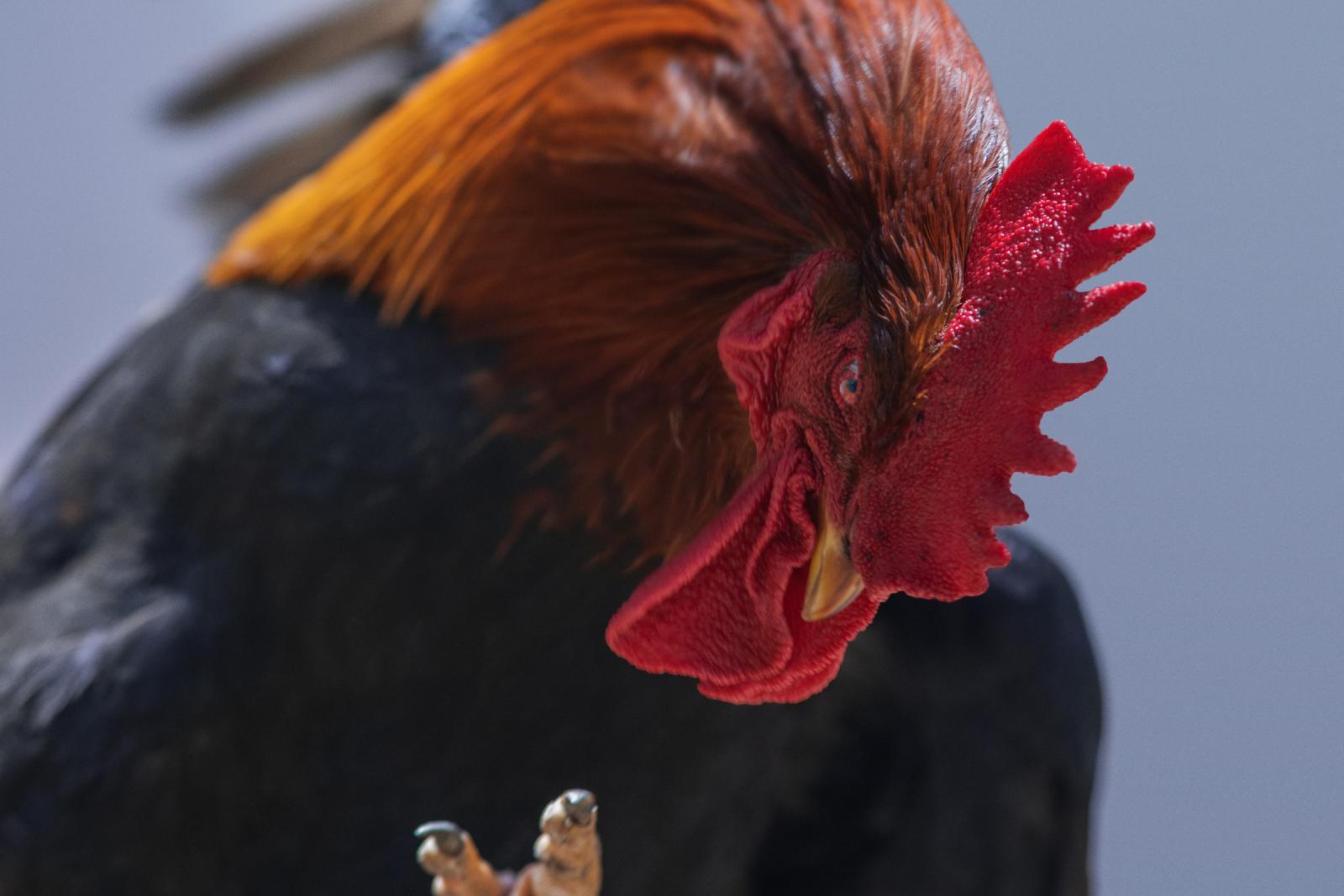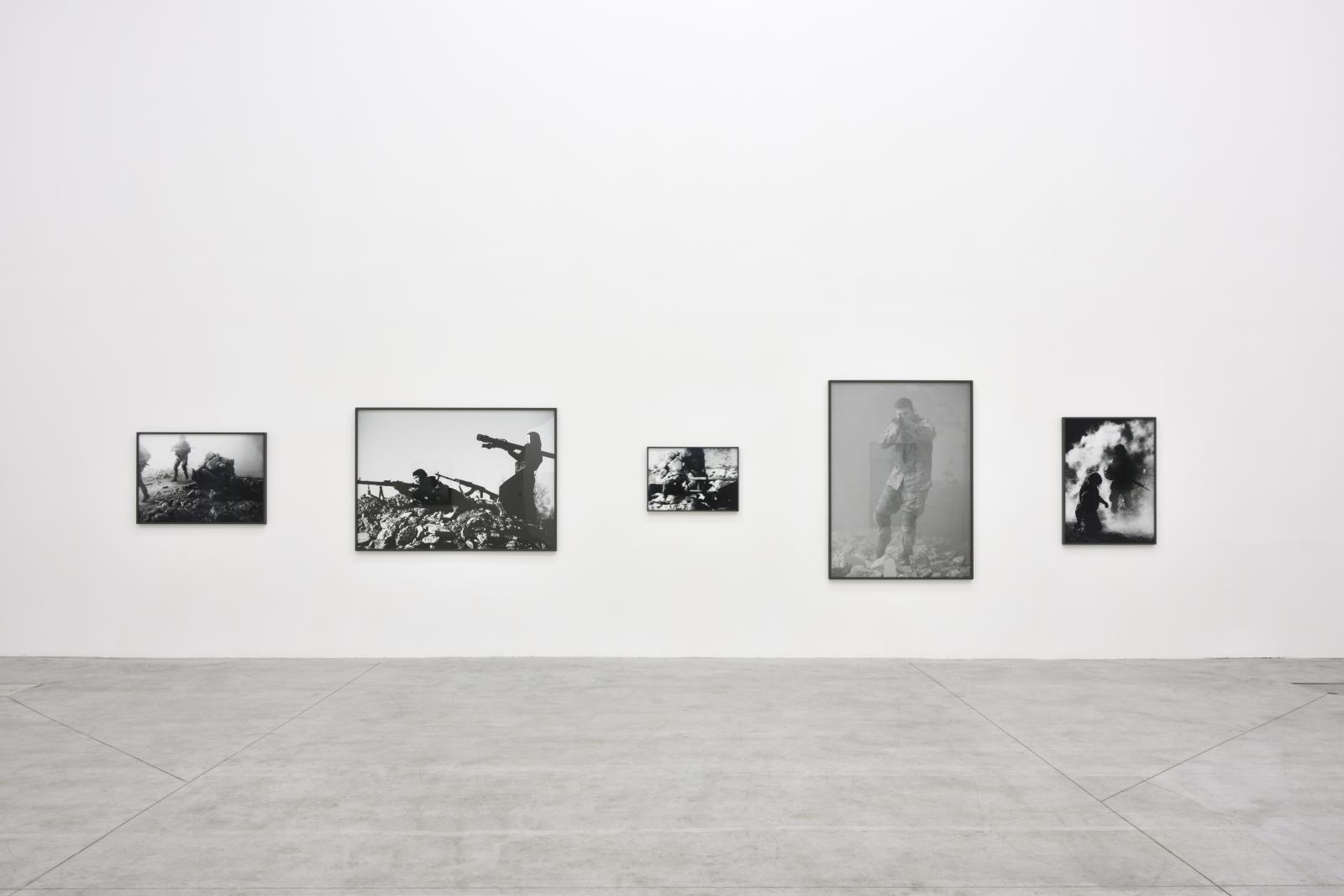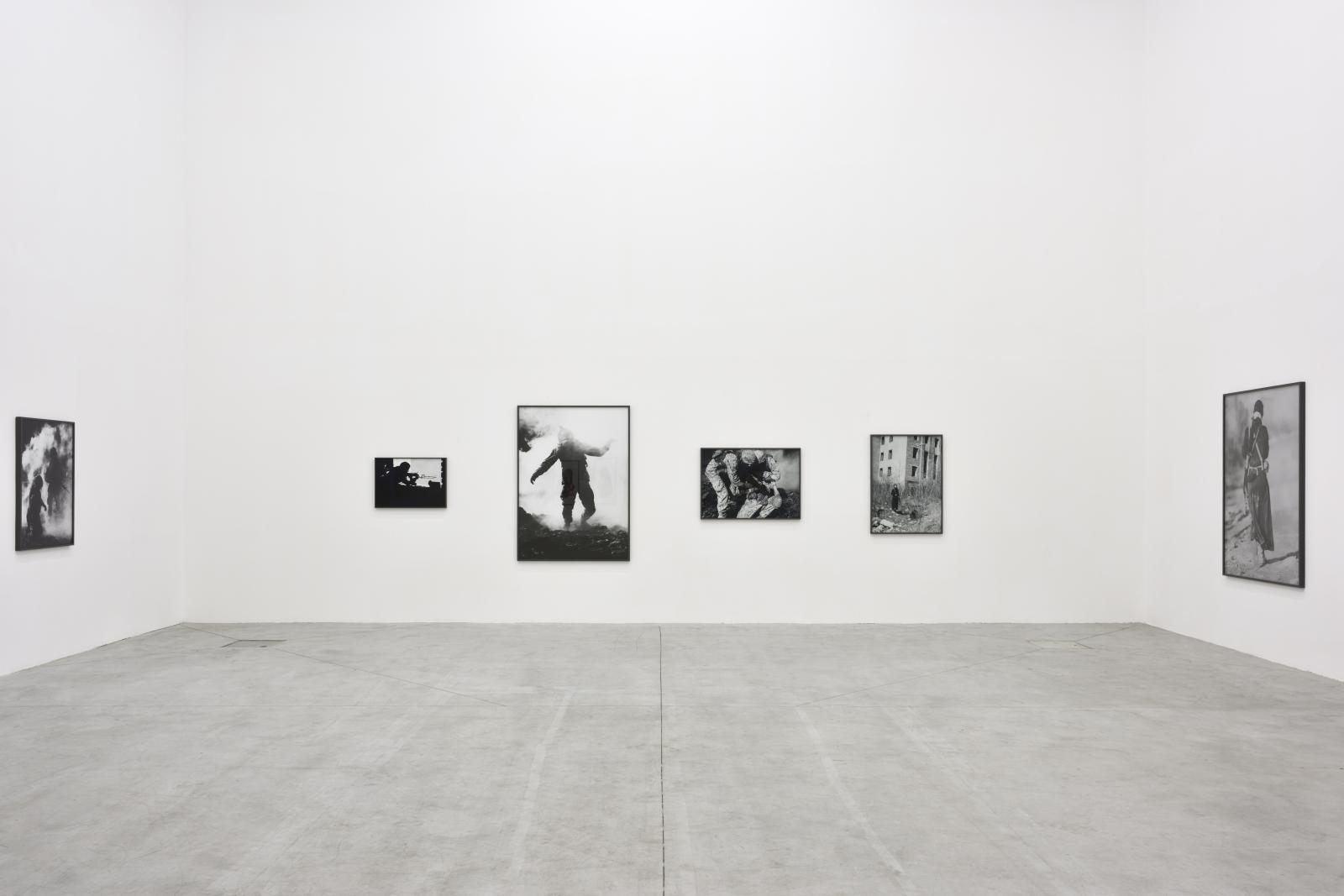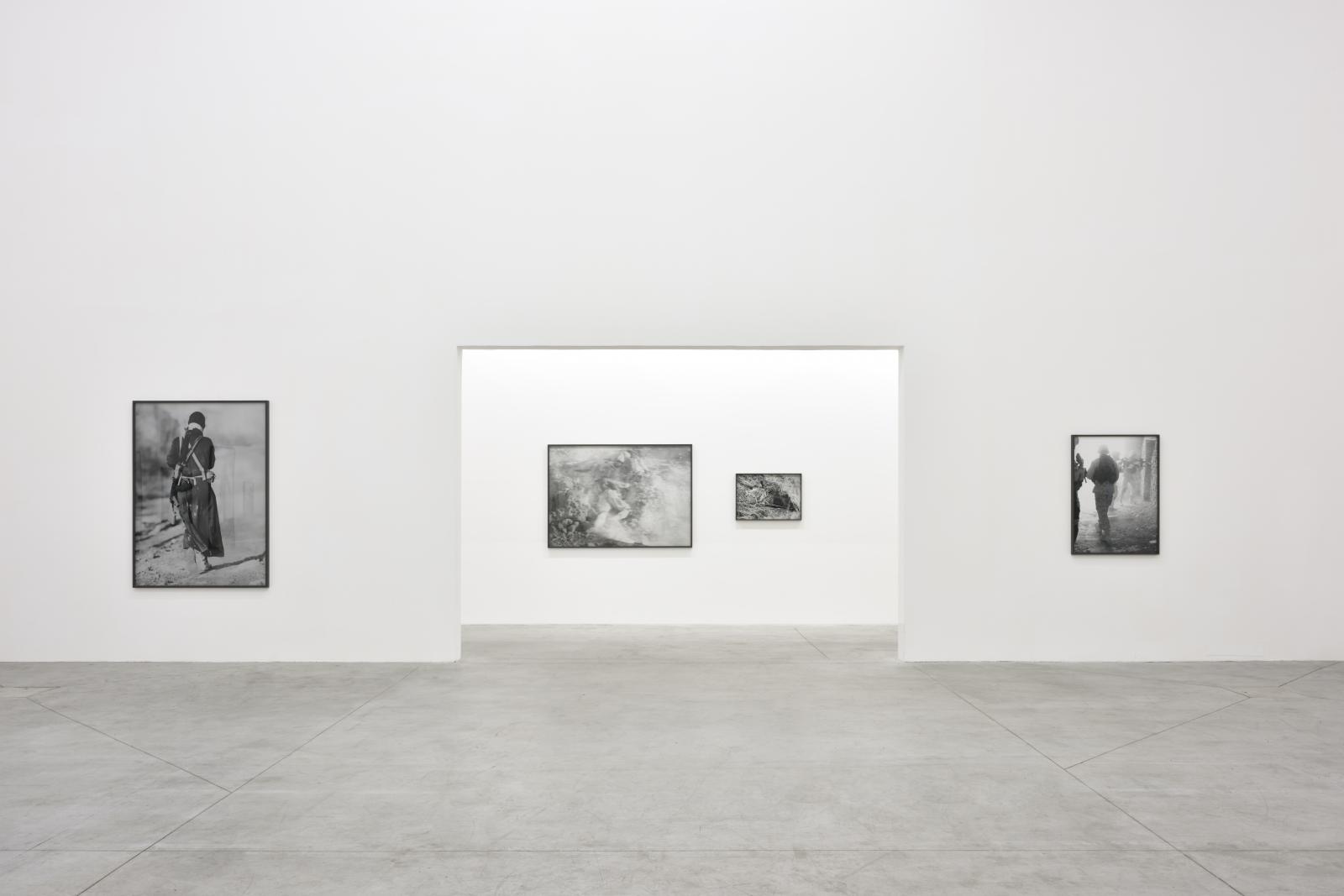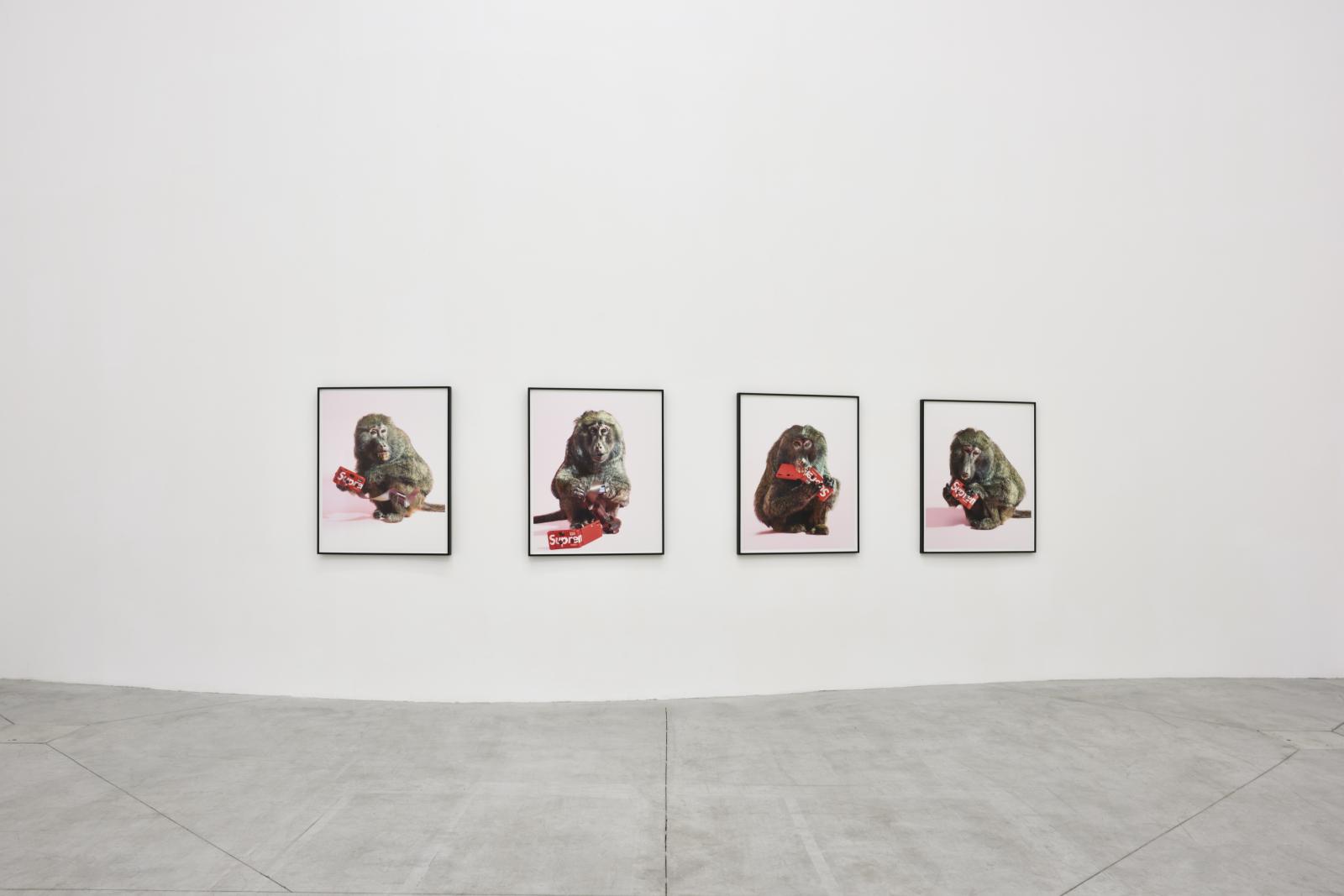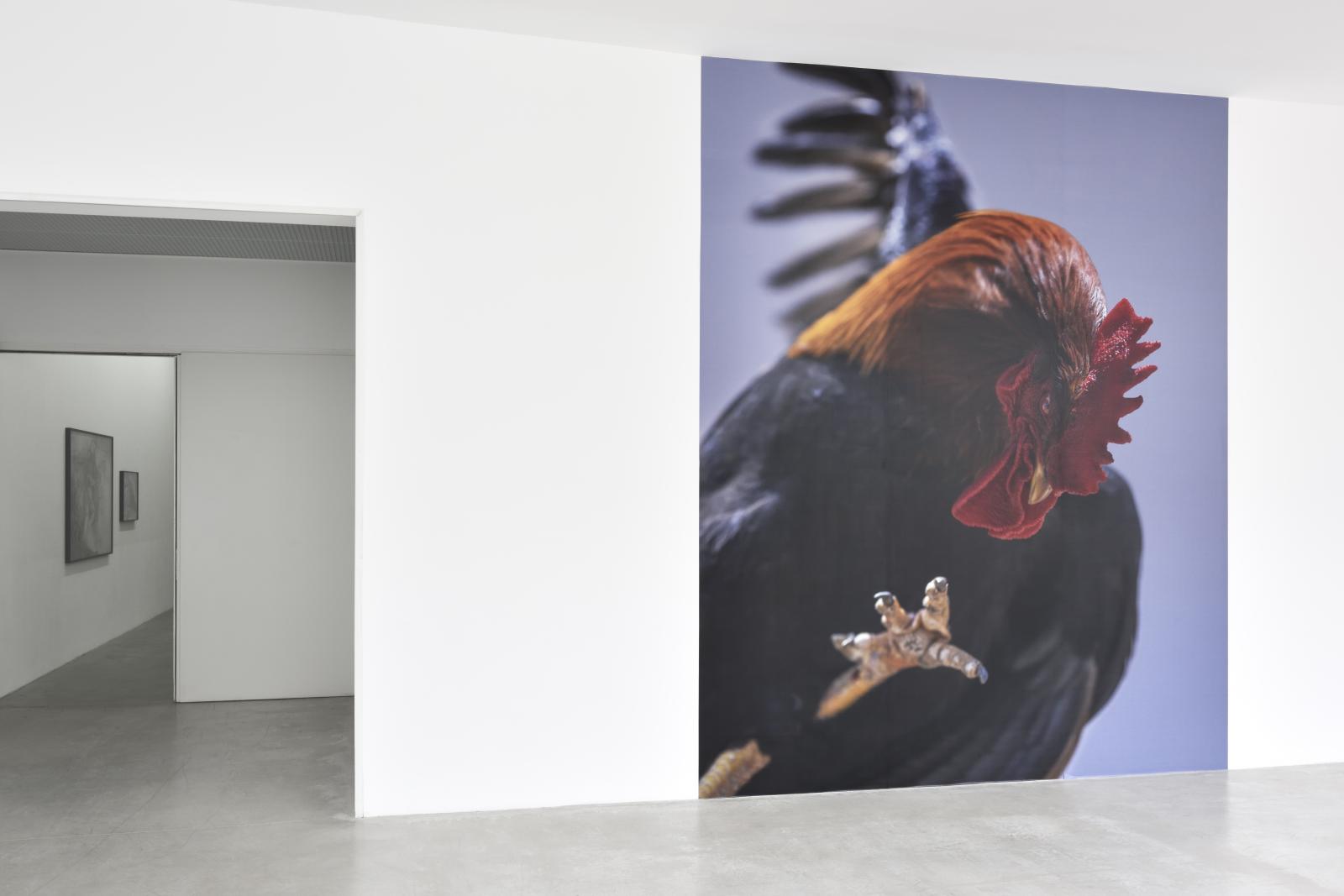Heji Shin
Blood Bath
Heji Shin, 1976 (Seoul). Lives between Berlin and New York.
Between art and fashion photography, what has made Heji Shin’s work distinctive over the last decade or so is essentially what––in an obliquely conscientious manner, and not without irony––it eludes in its interiority: the desire to judge, the certainties of our era, points of view about it, and a constant assessment of people and things; therefore eschewing morality.
Apparently attracted to what polarizes extreme opinions, contempt as well as cravings for celebrity, power, exposure, sex or motherhood, her position within art today is rare as it is wholly immersed in the era of unabashed neoliberalism where everything that exists is reduced to calculations between good and evil, truth and falsehood, and the never-ending enumerations operated by capital. It is in this world ruled by taste and class divisions, with its encoded and delineated spaces that Heji Shin moves with insolent freedom.
Between the striking images of deformed, bloody infants shot right after birth in the Babies series (2016), copulation scenes for Eckhaus Latta’s fashion campaign (2017), policemen’s porno-gay poses in Men Photographing Men (2018), and her gigantic Kanye West chromatic portraits (2018), there is no such thing as a “subject” but a thought in action that does not solve problems but creates them, inventing new ones and drawing from the power and dynamics of art to designate a field of experience and disrupt the order of representation.
Pornography is at the core of this questioning about intimacy and bodies that synthesizes all the current impulses of the gaze and what the gaze exposes, exacerbated by social medias and by the selfies and fake news era.
Soberly titled Blood Bath, Heji Shin’s exhibition for the Consortium Museum aims for a radical and literal confrontation of two presumably distinct photographic series within the same space. Two modes of representation that everything seems to oppose, except for the one and only strategy of the artist based on the refusal to root the image within interpretive grids, and on the desire to play with effects of repetition, surface and intensity.
On one side, there are the large-scale portraits of a monkey created in conjunction with an advertising campaign for Supreme that the brand would have preferred to discard because of their aggressiveness. Yet this image of a monkey devouring a camera printed with a logo floating on the surface of a bright pink background oozes a surprising aura of presence-absence. That same monkey could be found on a 2016 issue of Artforum, greedily chewing on a dildo!
On another side, under his gaze—after the “male gaze,” the “monkey gaze” could become a new paradigm—black and white war scenes unfold, shot in an indeterminate space-time whose anesthetized aspect definitively belongs to the coded history of photojournalism, with slow-motion, dusty and ruined landscapes, soldiers’ virile postures and photogenic female warriors.
This new series by Heji Shin is in fact subjected to a mise-en-scene shot during a live action game (or LARP, for Live Action Roleplaying) that consists in playing the role of characters immersed in a fictional universe. This type of game has spread all over the world and increasingly opens up to historical and political themes.
“The Gulf War did not take place,” prophesized Jean Baudrillard. The war Heji Shin strives for never ceases to come back in parodic form. Here the infinite, virtual parody of the war in Iraq replayed by fake soldiers in Ukraine exhausts itself in a childish reality show, in a simulacrum of power and with the exhilaration of the event of violence.
These images do not belong anymore to the order of representation nor to information in its narrowest meaning; subsequently the question of knowing whether it is necessary to create them, reproduce them, broadcast them, outlaw them, or even the “imperative” question about whether they are real or fake become irrelevant.
The closer we get to the question of the simulacrum the more obvious it becomes that what makes everything escape the representation of the real is such: there is no real, there is no relevance. In a truly topsy-turvy world, Guy Debord’s proposition stating that “the true is a moment of the false” never ceases to occur and to refute itself.
Outside of the exhibition space, a gigantic rooster shows off its domineering virility. He is a part, among others, of the recent flamboyant Big Cocks series (2020), which beyond its droll and obvious polysemous title reveals above all a powerful mastery of composition and color, unveiling the manner with which Heji Shin develops a physics of surfaces and a perceptive experience grounded in intensity that does not exclude laughter or violence.
— Stéphanie Moisdon
